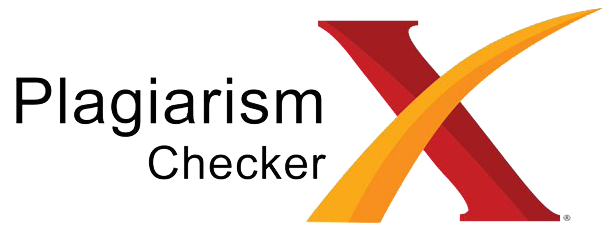Studi Literatur : Penerapan Network Data Envelopment Analysis Dalam Pengukuran Efisiensi Di Industri Perbankan
Sari
Keywords:
Efisiensi, Industri Perbankan, NDEA
Teks Lengkap:
Download PDFReferensi
Aubyn, M. S. (2009). Study on the efficiency and effectiveness of public spending on tertiary education. . European Economy, 390, 1–142.
Avkiran, N. K. (2015). An illustration of dynamic network DEA in commercial banking including robustness tests. Omega, 55, 141–150.
Banker, R. D. (1984). Some models for estimating technical and scale inefficiencies in data envelopment analysis. . Management Science, 30(9), 1078–1092.
Barr, R. &. (1991). A new paradigm for assessing the management quality of banking institutions, working paper. Dallas, TX. Federal Reserve Bank of Dallas.
Bogetoft, P. F. (2008). Network DEA: Some applications and illustrations. In Proceedings of DEA symposium. Japan: Seikei University.
Charnes, A. &. (1963). Deterministic equivalents for optimizing and satisficing under chance constraints. Operations Research, 11(1), 18–39.
Charnes, A. C. (1978). Measuring the efficiency of decision making units. European Journal of Operational Research, 2(6), 429–444.
Chen, Y. C. (2009a). Additive efficiency decomposition in two-stage DEA. European Journal of Operational Research, Vol. 196, No. 3, pp.1170–1176.
Downes, J. d. (1999). Kamus Istilah Akuntansi. Jakarta: Elex Media Komputindo.
Färe, R. &. (1984). Langkah-langkah efisiensi untuk perusahaan multiplant. Surat Riset Operasi, 3, 257–260.
Färe, R. a. (2000). “Network DEA”, . Socio-Economic Planning Sciences, 34, pp. 35-49.
Farrell, M. J. (1957). The measurement of productive efficiency. Journal of the Royal Statistical Society, Series A (General), 120(3), 253–290.
Foster, R. &. (2011). Creative destruction: Why companies that are built to last underperform the market and how to successfully transform them. . USA: Crown Publishing Group.
Gattoufi, S. A. (2014). A new inverse DEA method for merging banks. IMA Journal of Management Mathematics, 25, 73–87.
Gerami, J. &. (2013). Measuring performance of network structure by DEA-R model. Advances in Environmental Biology, 1224–1233.
Hanoum, S. (2018). Manufacturing performance measurement system using network data envelopment analysis. Bridging operations research and management accounting. Disertasi Universitas St. Gallen Switzerland. .
Hanoum, S. (2021). Manufacturing enterprise performance using network DEA: a profitability and marketability framework. International Journal of Business Excellence 25 (3), 277-299.
Hanoum, S. a. (2021). Linking performance measurements and manufacturing process improvements: the two-stage analytical framework . International Journal of Process Management and Benchmarking 11 (4), 542-564.
Johnson, D. a. (1985). Motivational Processes in Cooperative, Competitive and Individualistic Learning Situations. In: Ames, C. and Ames, R., Eds., . Research on Motivation in Education, Vol. 2, Academic Press, New York, 249-286.
Kao, C. &. (2008). Efficiency decomposition in two-stage data envelopment analysis: An application to non-life insurance companies in Taiwam. European Journal of Operational Research, 185(1), 418–429.
Kao, C. (2014). Efficiency decomposition for general multi-stage systems in data envelopment analysis. European Journal of Operational Research, 232(1), 17–124.
M. Seiford Lawrence, J. Z. (1999). Profitability and Marketability of the Top 55 U.S. Commercial Banks. Management Science 45(9), 1270-1288.
Mariz, F. B. (2018). A review of Dynamic Data Envelopment Analysis: state of the art and applications. International Transactions in Operational Research, 25(2), 469–505.
Meharwade, A. &. (2016). Efficient Keyword Search over Encrypted Cloud Data. Physics Procedia 78, 139–145.
Mowen, H. d. (2000). Akuntansi Manajemen Jilid 2. . Jakarta : Erlangga.
Park, K. S. (2009). European Journal of Operational Research, 193(2). Measurement of multiperiod aggregative efficiency, 567–580.
Perwitaningtyas, G. A. (2015). Faktor-Faktor Yang Mempengaruhi Efisiensi Bank Di Indonesia Periode Tahun 2008-2012. Diponegoro Journal Of Management, 4(1), 114.
Shi, X. E. (2021). Overall efficiency of operational process with undesirable outputs containing both series and parallel processes: A SBM network DEA model. EXPERT SYSTEMS WITH APPLICATIONS, 178.
Sun, J. W. (2017). Performance evaluation of heterogeneous bank supply chain systems from the perspective of measurement and decomposition. Computers and Industrial Engineering, Vol. 113, pp. 891-903.
Tone, K. &. (2009). Network DEA: A slacks-based measure approach. . European Journal of Operational Research, 197(1), 243–252.
Wang, K. H. (2014). Efficiency measures of the Chinese commercial banking system using an additive two-stage DEA. Omega (United Kingdom), 44, 5–20.
DOI: https://doi.org/10.37531/mirai.v9i1.7256
Refbacks
- Saat ini tidak ada refbacks.



